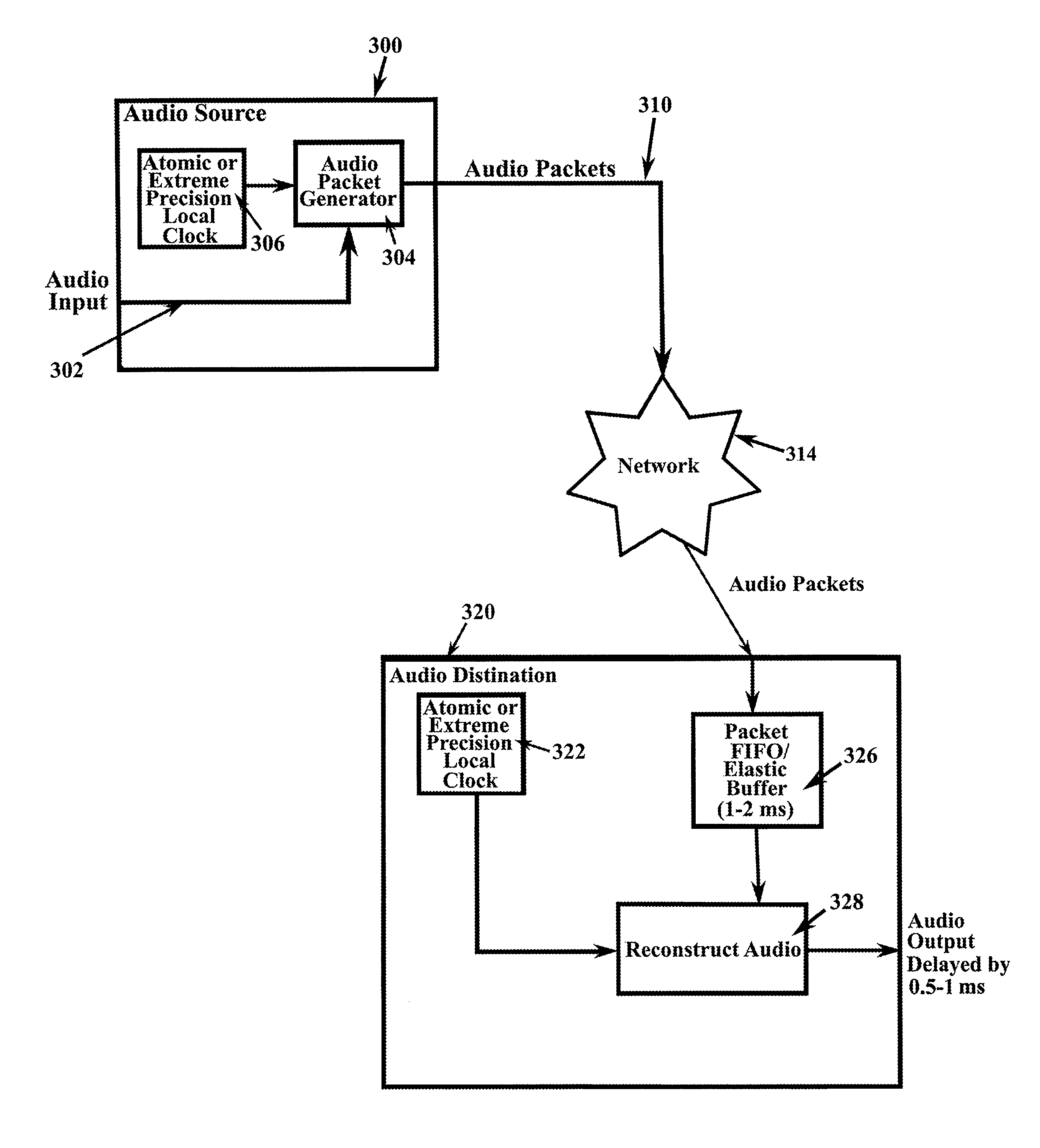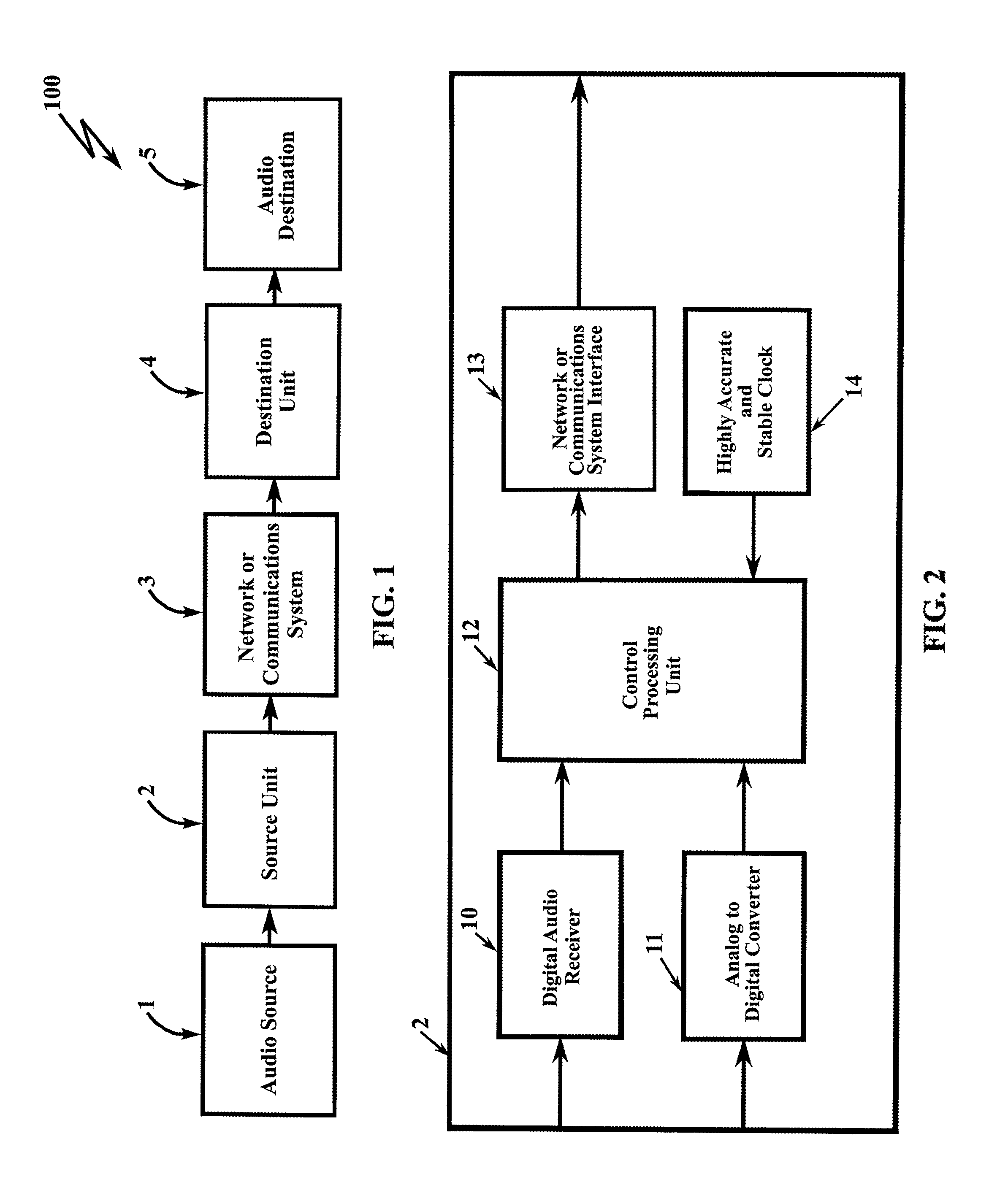System and method for routing digital audio data using highly stable clocks
a technology of digital audio data and clocks, applied in the field of audio routing systems and networks, can solve the problems of unfavorable sharing a timing signal, clocks that “tick” at different rates, and their resonating frequency may change, and achieve the effect of high quality
- Summary
- Abstract
- Description
- Claims
- Application Information
AI Technical Summary
Benefits of technology
Problems solved by technology
Method used
Image
Examples
Embodiment Construction
)
[0042]In describing the preferred embodiment of the present invention, reference will be made herein to FIGS. 1-4 of the drawings in which like numerals refer to like features of the invention.
[0043]The present invention involves equipment to transfer digital data, typically musical or sound of some sort, while eliminating even very slight offsets in the rate at which the digital signals are received. Preferably, each data packet is audible, and the object is to minimize the variation in that rate when sending a digital data either from one source to a plurality of receiving destinations or from a plurality of sources to be combined at a single destination, such that complete synchronization is always achieved.
[0044]A digital audio transfer apparatus is presented, which will allow for an improved method for transferring digital data in real time with low latency. In this manner, the destination begins to play immediately after the source begins to send. Importantly, independent, hi...
PUM
 Login to View More
Login to View More Abstract
Description
Claims
Application Information
 Login to View More
Login to View More - R&D
- Intellectual Property
- Life Sciences
- Materials
- Tech Scout
- Unparalleled Data Quality
- Higher Quality Content
- 60% Fewer Hallucinations
Browse by: Latest US Patents, China's latest patents, Technical Efficacy Thesaurus, Application Domain, Technology Topic, Popular Technical Reports.
© 2025 PatSnap. All rights reserved.Legal|Privacy policy|Modern Slavery Act Transparency Statement|Sitemap|About US| Contact US: help@patsnap.com



